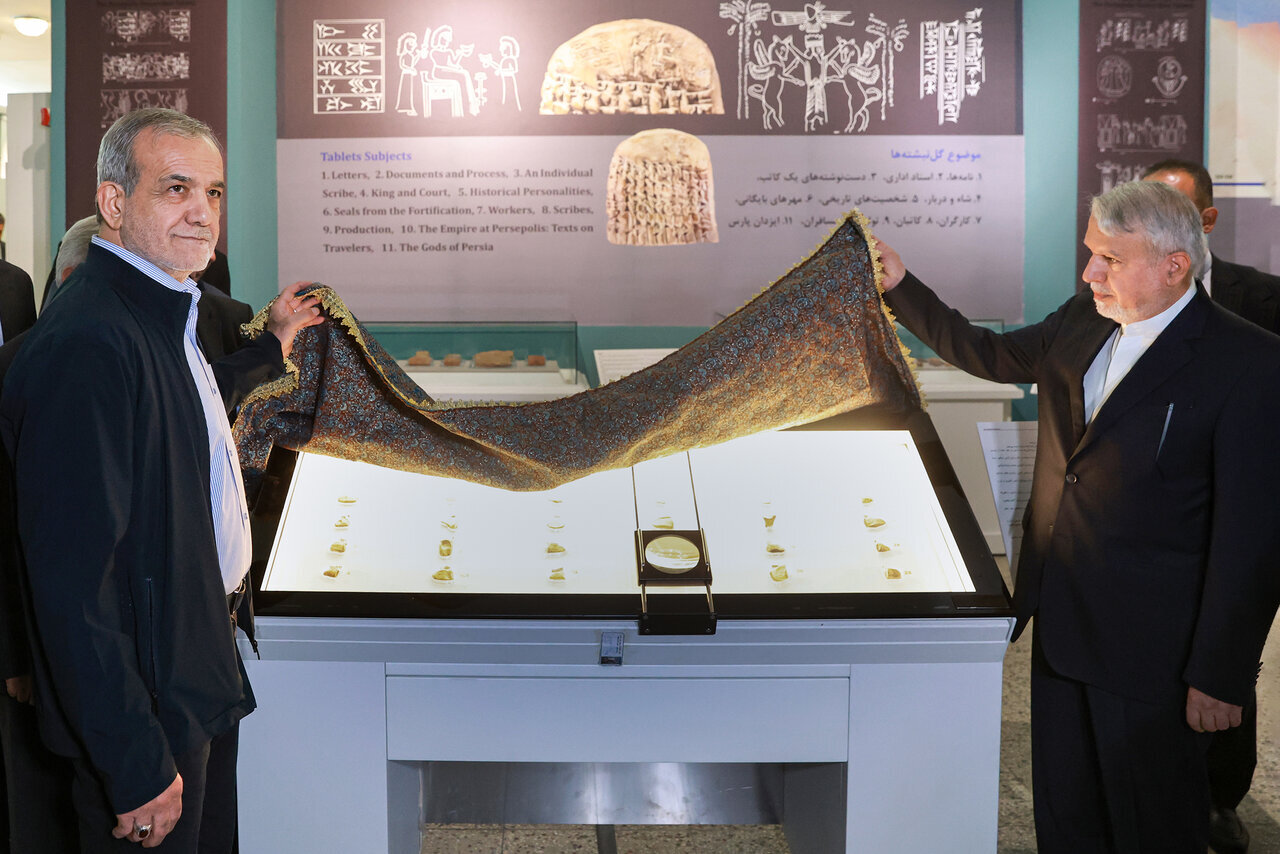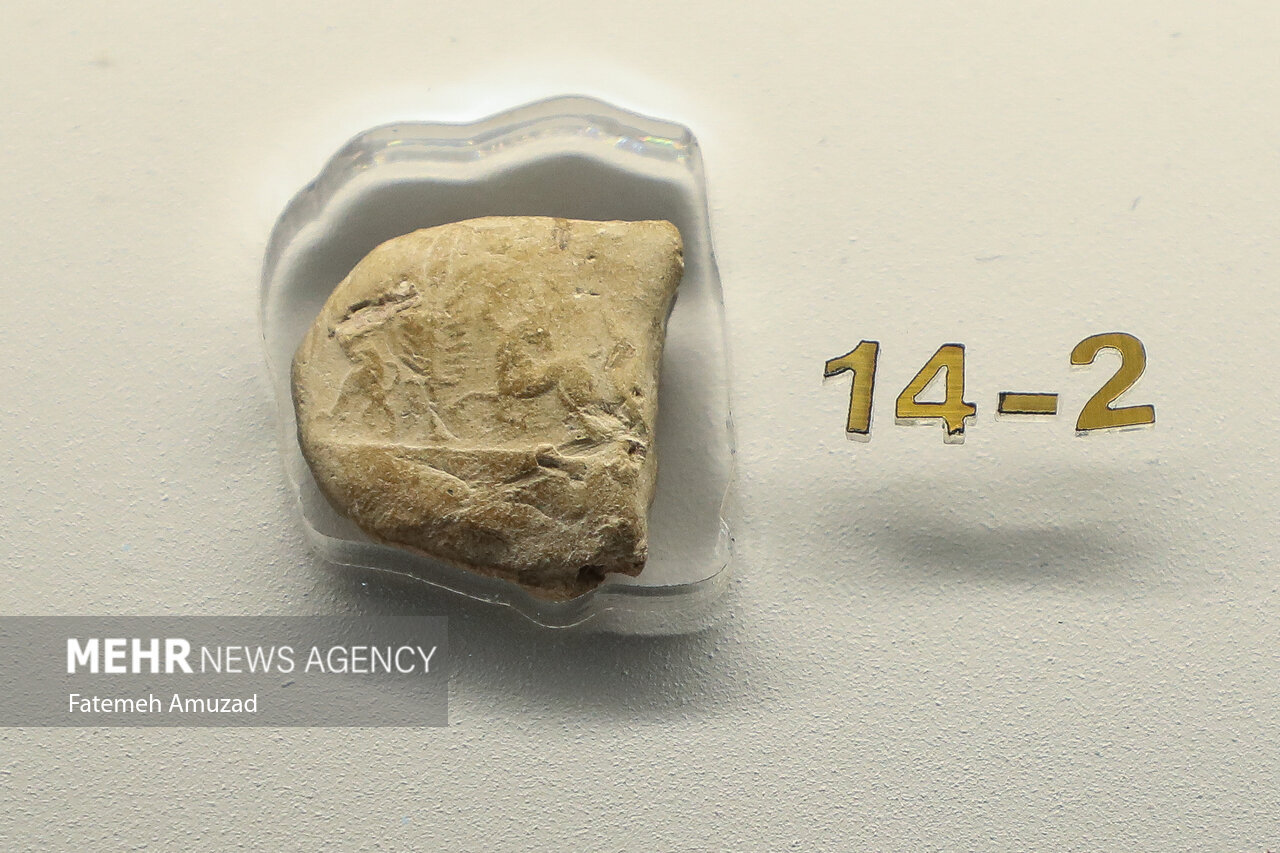President unveils Achaemenid clay tablets recently returned from U.S.

TEHRAN – On Tuesday, President Masoud Pezeshkian, accompanied by his Minister of Cultural Heritage, Tourism, and Handicrafts unveiled 30 Achaemenid clay tablets at the National Museum of Iran in downtown Tehran.
The tablets are part of a larger collection of 1,100 pieces recently been repatriated to Iran from the Oriental Institute of the University of Chicago.
The exhibition, which features ancient seals without inscriptions, will remain open to the public until November 20.
These artifacts, which date back to the reign of Darius the Great (509–493 BC), were returned to Iran on Sep. 26, following their arrival via a presidential flight.
According to organizers, the 30 selected pieces from the larger collection are now displayed in the ancient Iran section of the museum, alongside previous returns from similar collections.
Addressing the ceremony, Pezeshkian emphasized the historical significance of the Achaemenid era, stating, “If we closely examine our past, we can learn numerous lessons in cultural, social, political, and economic governance.”
“Understanding how the Achaemenid Empire managed such vast territories with peace, prosperity, and cultural flourishing is crucial for us today.”

Jebrael Nokandeh, the director of the National Museum of Iran, provided further details about the collection, explaining that the clay tablets bear impressions of archival seals with mythical themes. “These are not just artifacts. They provide invaluable insights into the economy of Persepolis during the reign of Darius I,” Nokandeh noted.
The entire collection returned from Chicago contains 1,100 tablets, with more still held at the university. Nokandeh described the Achaemenid Empire as one of the most significant periods in world history, ruling over an estimated 5.2 million square kilometers, spanning three continents from India to North Africa.
The tablets offer insights into governance, economic management, and social participation during Darius I’s reign. "These documents reveal the transparency and accountability of Darius’ economic administration, showing how workers' rights, women's rights, and societal roles were carefully documented," Nokandeh added.
Experts say that the Achaemenid clay tablets serve as a testament to Iran's rich heritage and demonstrate the continued importance of preserving and studying these ancient records.
The clay documents were originally discovered in 1933 during archaeological excavations in Persepolis , led by a team from the University of Chicago’s Oriental Institute. In 1935, under an agreement between Iran and the Oriental Institute, the tablets were sent to the U.S. for translation and study. However, the process of returning the tablets has been ongoing for decades.
Last year, following the late President Ebrahim Raisi’s visit to the U.S., a shipment of 3,506 Achaemenid tablets, including 836 smaller Aramaic pieces and 2,670 larger Elamite tablets, was returned to Iran. In prior years, other shipments had also been returned, including 1,783 tablets in 2019 and 300 in 2004. The largest batch of 37,027 tablets was repatriated in 1951.
Despite these returns, a significant number of Achaemenid clay tablets still remain at the Oriental Institute in Chicago, with the repatriation of each batch involving complex negotiations.
A number of the returned tablets are currently displayed at the National Museum of Iran, showcasing the rich cultural heritage of the Achaemenid Empire.
The UNESCO-listed Persepolis, locally known as Takht-e Jamshid, was the ceremonial capital of the Achaemenid Empire (c.550 – 330 BC). It ranks among the archaeological sites, that have no equivalent, considering its unique architecture, urban planning, construction technology, and art. Available evidence suggests that Persepolis was burnt by Alexander the Great in 330 BC apparently as revenge against the Persians because it seems the Persian King Xerxes had burnt the Greek City of Athens around 150 years earlier.
The Achaemenid Empire was the largest and most durable empire of its time, stretching from Ethiopia, through Egypt, to Greece, Anatolia (modern Turkey), Central Asia, and India at its height.
AM
Leave a Comment